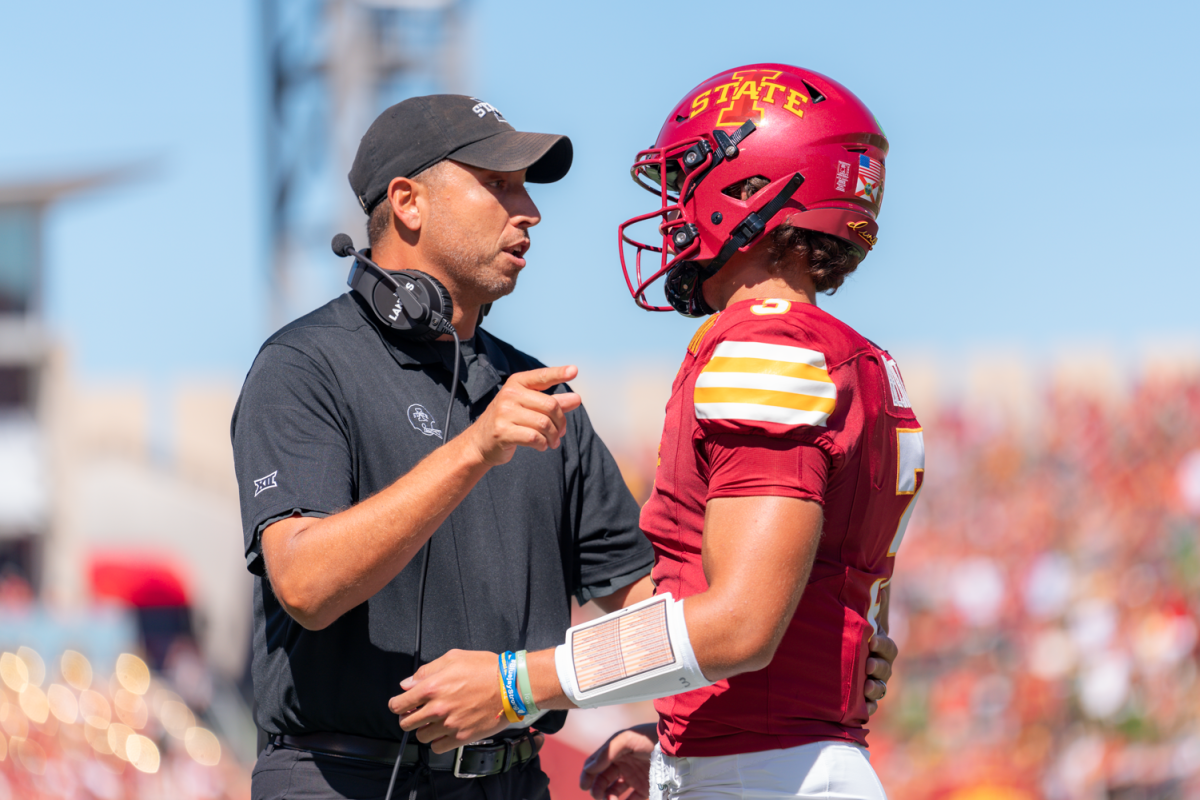Rec to offer weight training program
October 2, 2000
A new program will be available later this month to help students vary their workouts with weight training, which has many benefits that cannot be gained from cardiovascular exercise, experts said.
Lifting weights can increase metabolism, decrease the risk of osteoporosis, increase self-esteem and improve balance and strength, said Deb Atkinson, temporary instructor of health and human performance.
In order to get all the benefits from weight lifting, she said it must be done correctly. Recreational Services is organizing a program to help students develop a safe and effective weight workout to optimize the results, said Trisha Vennink, fitness coordinator of the personal trainer program at the Lied Recreation Center.
The program, which begins Oct. 16, will offer a one-time assessment, including a fitness test, orientation to the weights and machines and development of a general fitness plan, said Vennink, senior in exercise and sport science.
The muscle gained through weight lifting increases the body’s metabolism, Atkinson said.
She said this increase helps those who want to loose weight lose it faster. For every pound of muscle added, metabolism is increased 2 to 3 percent, she said.
Cardiovascular exercise, such as running, may burn more calories than weight lifting for an isolated incident, but the increase in metabolism gained through weight lifting will soon build up, becoming more beneficial in the long run, Atkinson said.
“If you gain five pounds of muscle, that means you can eat 15 percent more calories without gaining weight,” she said.
Greg Welk, assistant professor of health and human performance, said adding weight lifting to a workout while dieting can also prevent the decrease in metabolism that usually occurs with calorie restriction. This allows the body to burn more calories while at rest.
Another benefit of weight lifting is the protection it provides against osteoporosis, Atkinson said.
Osteoporosis is a disease characterized by weak bones and an increase in bone fractures, she said.
When muscle is added, the pressure exerted on each bone is greater, causing the bone to become stronger, she said.
The increased bone density prevents calcium loss and decreases the risk of osteoporosis, she said.
Perhaps the most desirable effect of weight training is the results seen in the mirror, Atkinson said.
“What matters most is body composition,” she said. “One hundred twenty-three pounds of muscle looks better than 123 pounds of fat.”
Some students, especially women, are wary of weight lifting because they are afraid of becoming too muscular, said Deb Power, adjunct instructor of health and human performance.
She said this is a common misconception, and there are ways to lift weights that increase muscle tone without becoming too big.
“Women have to work really hard to bulk up,” Atkinson said. “You won’t look like a body builder.”
To lift weight for tone, students should do 10 to 12 repetitions of each exercise at low weight, Vennink said.
For those who wish to build a more muscular physique, Vennink said she recommended lifting larger amounts of weight and doing only six to eight repetitions.
Welk said it is wise to begin lifting with lighter weights, because most initial adaptations the body experiences at first come from the repetitious movements, and not from weight.
The initial gains in strength occur as improvements in muscle synchronicity and coordination are made, allowing the body to work more efficiently and to become stronger, he said.
Once the body has adapted, it is okay to increase weight to further challenge muscles, Welk said.
Atkinson said exercises should “stimulate every major muscle group,” including the legs, chest, back and gluteal muscles.
“The key is balance,” Atkinson said. Many work on the “mirror muscles” such as the triceps, biceps, pectoral and abdominal muscles, she said.
This can lead to an imbalance of weight, which can cause back injury and pain, she said.
Atkinson said a well-balanced workout can be accomplished by performing 10 to 12 different exercises that are challenging enough so, after eight to 12 repetitions, the muscles are tired.
Vennink suggested doing four to six lower body exercises and three to five upper body exercises.
Including a warm up and cool down, this should take no more than an hour, she said.
Weight training yields the best results if done two to three times a week, Welk said. However, “one day a week is better than no days,” he said.
For students considering a weight program, Power recommended starting to lift using machines, which are safer and easier to use.
Once comfortable with machine lifting, free weights can be incorporated into the workout, she said.
Free weights are a way to better define muscles and concentrate on specific muscle groups, Power said.
The best way to start a weight-training program is to get direction from someone knowledgeable about lifting weights, she said.
“It is not advisable to just go in and do it,” she said. “[Lifting weights] incorrectly is worse than not doing it at all.”
The cost of the weight orientation program is $25. Personal trainers are available for $10 for an hour session with a six-week minimum. These programs are available to students, faculty and staff.






